Why do plums fall before ripening and what to do?

If the plum sheds still unripe fruits in a small percentage, this is normal. The process can be considered natural, because the tree is a self-regulating system that can get rid of the amount of fruit for which the root system does not have enough strength. But it also happens that a tree loses very small fruits, and this is very noticeable. You should figure out why this is happening and how to fix it.
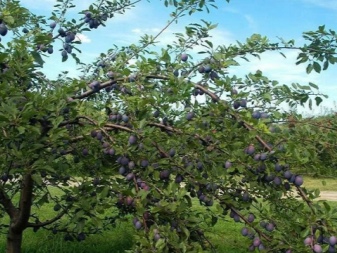
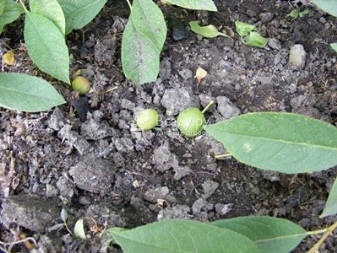
Improper care
All the reasons are divided into several groups: here are pests, diseases, and excessive acidity of the soil, and weather conditions. But often the problem is in the care of the plum. For example, the tree in every possible way shows that it lacks moisture, and the gardener does not react. Plums, by the way, suffer from a lack of moisture more often than other garden trees. Its roots grow horizontally, they are not so buried in the ground. The root system of a tree cannot extract water from the depths of the soil on which it grows. And if a drought comes, the tree runs the risk of being left without a crop.
To prevent water starvation, there should be a lot of snow under the drain in winter. If you have to collect it from the site, then this should be done. During the awakening period, the tree will have a supply of moisture. If there is little snow and no more spring rains, the first watering should be done before bud break. The second will be after flowering, and the third - during the growth of the fruit. But the main reference point, of course, is the state of the land itself.
The plum must be watered correctly.
- The tree is dug in a circle around the width of the crown. If the ground is soddy, you can build a soil roller around the circumference to keep moisture under the tree.
- Watering should be plentiful. The reference point is the soaking of the soil over the entire area, the depth is at least 60 cm. If the weather is dry, an adult tree needs 20 large buckets of water for 1 watering. If the plant is young, half the water is required.

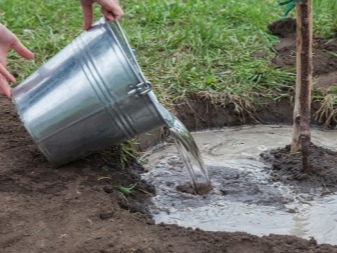
But abundant watering is not for every time. The soil around the plum should not be wet all the time, otherwise the roots can rot. The composition of the soil will also have to be taken into account: loams need abundant watering, but rare. Sandy soil should be watered more often, but less water will go away. Also, the fruits fall off due to a lack of nutrients in the soil. The fact is that if they are really scarce, the plum is forced to dump part of the harvest prematurely, this can even be called a self-preservation instinct. There are irreplaceable fertilizers, for example, potash.
Consider how to prevent the fruits from falling.
- In the fall, add potash fertilizer to the soil. One fruiting plum will need 10-11 kg of humus, 70 g of superphosphate, 200 g of wood ash.
- During the growing season, the plum must be fed with a water-soluble complex after rains. If there is no rain, after abundant watering. This feeding should be during the period of fruit formation.
- Spraying for the fruit tree is also important. These can be water-soluble microbiological compounds. For a weakened culture, foliar feeding, if not resuscitation, is an operational procedure. It can be "Bioclad", "Plantofol", "Agromaster".
By the way, fertilizers can also harm, and not bring the fruits to ripening. If, for example, you overdo it with nitrogen, this will happen, the yield will decrease, and - sharply.


Pests and the fight against them
Their negative impact cannot be underestimated. For example, sawfly: the butterfly of this pest lays eggs even at the flowering stage. And the very first caterpillar will eat up the inside of the fruit, and even with a bone, and then it will come out and pupate. And the process will repeat itself.If the gardener does nothing, several generations of the sawfly will parasitize on the plum during the season. A well-known enemy is the plum moth, it works like a sawfly, but injures the ovaries and pulp of the fruit.
Unripe plums fall off. And there is also the thickened leg, which lays eggs only on dead trees. The caterpillar, on the other hand, straightens out the green bones. The fruits soon crumble. Pest control must be done without delay. For this, there are chemical, mechanical, and also biological methods. Chemical: the plum can be treated with special insecticides after the finish of flowering. It is after flowering, because the products can infect not only pests, but also bees.
Mechanical methods are less dangerous:
- deep digging of the earth, this is done before the onset of frost, at the end of the season, you need to bring up those larvae that are frozen in the air;
- collection of ovaries and fruits with burning (you can also bury them half a meter deep);
- Spread a white sheet or a similar matter under the plum on a gloomy, sunless day, shake the plum strongly, adult insects fall on the fabric.
Biological methods shouldn't be ignored either. For example, place titmouses and nest boxes on the territory of the garden, and in winter you can hang bird feeders. The birds that have arrived at the site in the spring will help to deal with pests. Pheromone traps are also an excellent solution to save the harvest. These are cardboard houses that are very attractive to insects. Those fly at them and stick to the trap with their paws. You can also spray plum trees with broths of wormwood, chamomile, red pepper. Pests are also afraid of such natural remedies.
Control measures against insects dangerous to plums can be complex. In addition, some of them, for example, biological ones, will help not only drain. Birds on the site will also exterminate other pests that attack shrubs, vegetables, fruits, etc.
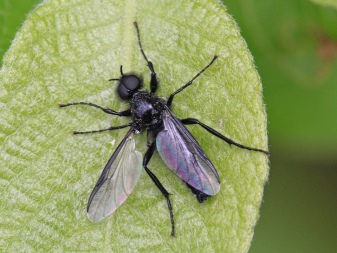

Other reasons
It is worth analyzing a number of other reasons that affect the fact that the plum sheds the fruit too early.
- Spring return frosts. This is one of the main reasons for ovary dropping. Not only the frozen pistils suffer, but also the leaves (they become brown). If pollination has already occurred, the ovary is formed, the plum can withstand frost. But if the frost is real, below zero, the frozen fruits crumble without having time to ripen. If the forecast promises a strong drop in temperature, the plum should be watered around the perimeter of the crown. There is also a way to create a smoke screen, but you need to be very careful with it.
- Getting rid of barren flowers. A tree that sheds very small ovaries can get rid of barren flowers in this way. Either the problem is a lack of cross-pollinator, or the garden was treated with insecticides during flowering, which destroyed the pollinators. There are several ways out: forget about the use of herbicides in a blooming garden, attract pollinators to the garden, plant various plums on the territory, do not neglect artificial pollination.
- Fungal diseases. From milky sheen to fruit rot, red spot and sooty fungus. As soon as unhealthy features appear on the leaves, fruits, bark, the tree should be diagnosed and treatment should be started immediately.
- Huge harvest. You do not need to do anything with this reason, since the tree itself is trying to solve the problem. He cannot afford to feed so many fruits, he tries to get rid of the extra ones in order to cover the possible harvest. The gardener, no matter how sorry he was for the crumbling plums, will have to ignore this.
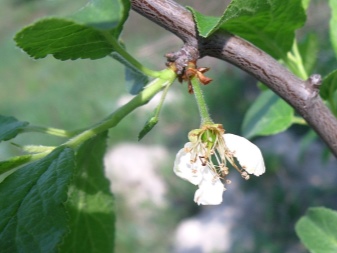
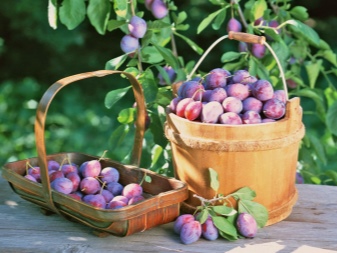
However, according to the last point, experts advise gardeners to help the drain, that is, to deal with the rationing of the crop. It is necessary to wait for the natural fall of the ovaries, and then remove the excess from the plum manually.
It is necessary to shake all the branches, literally one by one, then the dead ovaries, still dangling on the tree, will fall off themselves. Then you need to remove the dead, unhealthy fruits, on which the tree also wastes its energy (in vain). Whether with scissors or pruning shears, but you need to leave one or two of the most developed ovaries per 10 cm of a branch, removing the rest. In this way, you can help the tree to make optimal use of food for a rationally predictable harvest.
To prevent the fruit from dropping, it is enough to adhere to simple rules. It is necessary to avoid thickened landings. The above described how the root drainage system works, you need to take this into account. Sanitary and formative pruning - where without them, the plum needs it, like all the trees and shrubs in the garden. Removing weeds from the trunk of the plant is also a must. Timeliness of dressings, monitoring the condition of parts of the tree, identifying pests are also included in the program of rules. Well, and, perhaps, the plum does not have enough pollinators, which means that you need to add pollinating plants and honey plants to it on the site.
Successful problem solving!

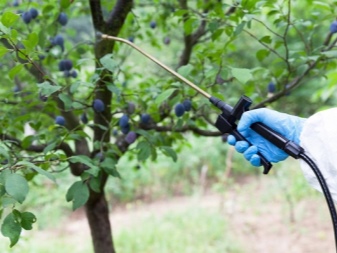













The comment was sent successfully.